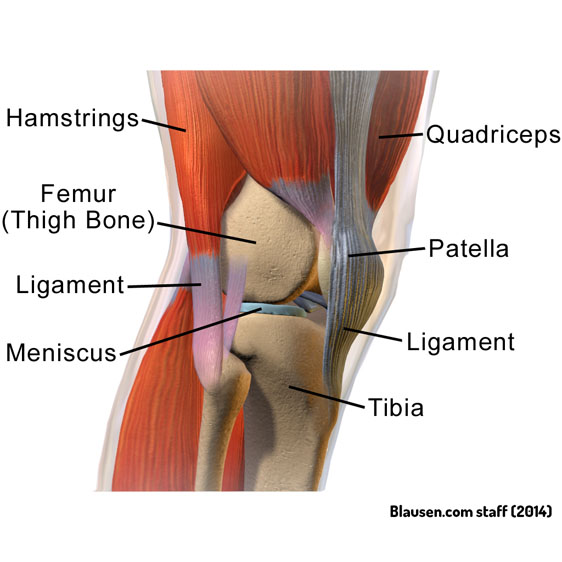
We run. We jump. We climb stairs. Sometimes we (well, some of us) compete in marathons or climb mountains. Throughout our lives, our knees take a beating. So it’s no wonder that a good bit of pain is associated with this important joint.
The knee is a hinge joint that essentially allows us to move. Without it, we would be immobile. Understanding the construction of the knee can be tricky. Most of us are only aware of the kneecap, but there’s much more to this joint.
Here’s how it’s laid out: The knee joins the thighbone (femur) to the shinbone (tibia). The smaller bone (fibula) that runs alongside the tibia and the kneecap (patella) round out the bone structure of the knee. Tendons connect the knee bones to the leg muscles that move the joint, and ligaments join the knee bones and provide stability to the knee. All these elements work together to help you twist, turn, run and jump.
"Even the best feats of engineering are susceptible to a few structural weaknesses, and the knee is no exception," says board-certified orthopedic surgeon Vandit Sardana, M.D., FRCSC, who is fellowship-trained in total joint replacement and preservation for hips and knees. He sees patients at Beaufort Memorial Orthopaedic Specialists in Bluffton and Beaufort.
Overuse and Inflammatory Injuries
Runners, gardeners, and others who use their knees a lot experience these types of problems. Overuse can result in tendinitis or swollen ligaments, which are painful, but not too serious.
"This type of knee pain can usually be treated with the RICE method: rest, ice, compression, and elevation, or with over-the-counter anti-inflammatory pain relievers," says Dr. Sardana.
If that doesn’t help, an orthopedic specialist might prescribe stronger anti-inflammatory medications. You need to be careful with the strong anti-inflammatory medications however, as they can be hard on your gut and kidneys.
Arthritis
Most common in older people, arthritis of the knee is a result of damaged cartilage. Most people start noticing joint pain in their 40s, but it’s not until they reach their 50s and 60s that the pain is bad enough to seek medical attention.
Cartilage is there to protect the knee—like a layer of insulation. When it’s healthy, the bone can slide across the cushion like ice on ice, but when it becomes damaged, problems like arthritis arise.
"In the early stages, arthritis is treated with nonsurgical methods, such as lifestyle changes, topical and oral medications, injections and knee braces. Usually when patients find no pain relief from one treatment, they move on to another in order to maintain their active lifestyle," says Dr. Sardana. "Your doctor may recommend orthopedic surgery or a partial or total knee replacement."
Ligament Tears
If you’re a sports fan, you’ve probably heard the term “torn ACL.” It’s a common injury in athletes. ACL stands for anterior cruciate ligament, and actions like twisting your knee with the foot planted, getting hit on the knee and stopping suddenly when running can tear it. But the ACL isn’t alone in being at risk. Your knee is made up of four ligaments, all of which can tear. Depending on the severity of the tear, knee surgery may be needed.
“This needs to be evaluated with a thorough clinical exam combined with imaging studies, such as an x-ray or MRI," says Dr. Sardana. "There are various options to treating ligament tears, from bracing to surgical fixation, depending on individual circumstances and location of the tears.”
You Have Options to Relieve Your Pain
Fortunately, there are several treatment options available to you if you suffer from knee pain. Learn more about the options for knee pain provided by orthopedic specialists at Beaufort Memorial.


